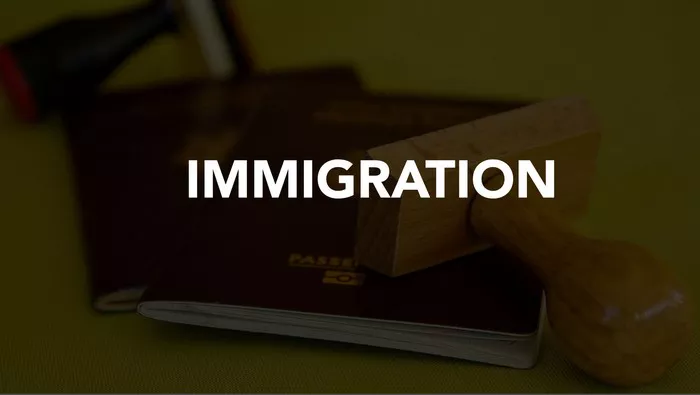Investment immigration, often referred to as citizenship-by-investment or residency-by-investment, is a legal process through which individuals can obtain residency or citizenship in a foreign country by making a significant financial investment. This approach has gained popularity among high-net-worth individuals seeking to diversify their assets, expand their business opportunities, or gain access to better education and healthcare systems. In this article, we will delve into the intricacies of investment immigration, exploring its types, benefits, drawbacks, and the overall process involved.
Types of Investment Immigration Programs
Investment immigration programs vary from country to country, each with its own set of requirements and investment options. However, they generally fall into two main categories:
1. Residency-by-Investment: Under this scheme, investors are granted temporary or permanent residency in exchange for a qualifying investment. The residency rights typically come with certain conditions, such as maintaining the investment for a specified period or spending a minimum amount of time in the country each year. Examples of residency-by-investment programs include the Portugal Golden Visa, the Spain Golden Visa, and the Australia Significant Investor Visa.
2. Citizenship-by-Investment: In citizenship-by-investment programs, investors can acquire citizenship in a foreign country by making a substantial financial contribution to the country’s economy. Unlike residency programs, citizenship-by-investment grants individuals the right to live, work, and study in the country indefinitely, as well as enjoy the benefits of being a full citizen. Notable examples of citizenship-by-investment programs include those offered by Malta, Cyprus, and St. Kitts and Nevis.
Benefits of Investment Immigration
Investment immigration offers a myriad of benefits for investors, including:
1. Global Mobility: Citizenship or residency in a foreign country provides individuals with greater freedom to travel internationally without the need for visas or residency permits. This can be particularly advantageous for businesspersons and frequent travelers.
2. Access to High-Quality Healthcare and Education: Many investment immigration destinations boast world-class healthcare systems and educational institutions. By securing residency or citizenship in such countries, investors can ensure access to top-tier medical services and educational opportunities for themselves and their families.
3. Tax Optimization: Certain jurisdictions offer favorable tax regimes for residents or citizens, including low or zero taxation on foreign income, capital gains, or inheritances. This can result in significant tax savings for investors seeking to optimize their financial affairs.
4. Diversification of Assets: Investing in real estate, businesses, or government bonds in a foreign country allows investors to diversify their asset portfolio geographically, reducing risk and safeguarding against economic and political instability in their home country.
5. Political Stability and Security: For individuals hailing from politically volatile or conflict-ridden regions, acquiring residency or citizenship in a stable and secure country provides a sense of security and peace of mind for themselves and their families.
Drawbacks of Investment Immigration
Despite its many advantages, investment immigration also has its drawbacks, including:
1. High Financial Costs: The initial investment required to qualify for residency or citizenship can be substantial, often running into hundreds of thousands or even millions of dollars, depending on the program and country chosen. This financial barrier may deter individuals with limited resources from pursuing investment immigration.
2. Complex Application Processes: Navigating the application process for investment immigration can be daunting and time-consuming, involving extensive paperwork, background checks, and legal procedures. Investors may need to enlist the services of immigration consultants or lawyers to assist them, adding to the overall cost.
3. Residency or Citizenship Conditions: Some investment immigration programs impose strict residency or citizenship conditions, such as minimum stay requirements or mandatory language proficiency tests. Failing to meet these conditions could jeopardize an investor’s status and lead to its revocation.
4. Risk of Investment Loss: Investing in foreign real estate, businesses, or government bonds carries inherent risks, including fluctuations in property values, economic downturns, and political instability. Investors must conduct thorough due diligence and assess the risk-return profile of their chosen investment before proceeding.
5. Social Integration Challenges: Moving to a new country entails adapting to a different culture, language, and social norms, which can pose challenges for individuals and their families, especially if they have young children or elderly relatives.
The Investment Immigration Process
The investment immigration process typically involves the following steps:
1. Research and Planning: Investors should research various investment immigration programs, considering factors such as investment requirements, residency or citizenship benefits, tax implications, and quality of life in the target country. Consulting with immigration experts or lawyers can help investors make informed decisions.
2. Initial Application: Once a suitable program is chosen, investors submit an initial application to the respective immigration authorities, along with supporting documents such as proof of investment funds, background checks, and medical examinations.
3. Investment Fulfillment: Upon approval of the initial application, investors proceed to fulfill the investment requirements specified by the program, whether it involves purchasing real estate, making a financial contribution, or investing in government bonds.
4. Residency or Citizenship Application: After completing the investment, investors submit a formal residency or citizenship application, along with any additional documents or fees required by the immigration authorities. The application is then reviewed, and if successful, residency or citizenship status is granted.
5. Compliance and Renewal: Once residency or citizenship is obtained, investors must comply with any ongoing requirements, such as maintaining the investment for a specified period, renewing residency permits, or fulfilling tax obligations in the host country.
Conclusion
In conclusion, investment immigration offers a compelling opportunity for individuals seeking to enhance their global mobility, access superior healthcare and education, optimize their tax position, and diversify their assets. However, prospective investors should carefully weigh the benefits against the costs and risks involved, conduct thorough due diligence, and seek professional advice to ensure a successful and seamless immigration journey. By understanding the nuances of investment immigration programs, investors can make informed decisions that align with their personal and financial goals, paving the way for a brighter and more prosperous future abroad.


